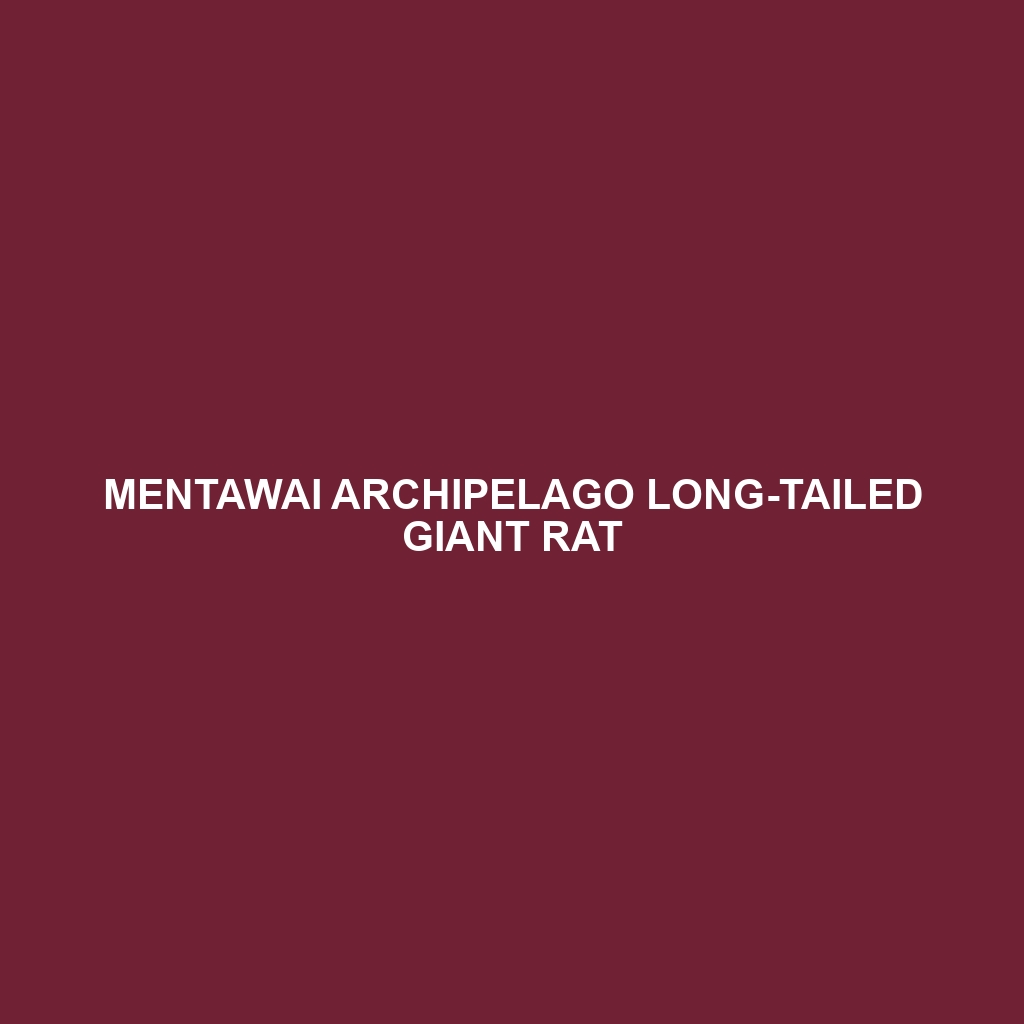Species Description: Mentawai Archipelago Long-tailed Giant Rat
Common Name: Mentawai Archipelago Long-tailed Giant Rat
Scientific Name:
Habitat
The Mentawai Archipelago Long-tailed Giant Rat is primarily found in the dense rainforests of the Mentawai Islands, located off the west coast of Sumatra, Indonesia. This species thrives in tropical lowland forests and is often associated with mountainous and hilly terrains, where the humidity and biodiversity are high. The lush vegetation provides both cover and a rich environment for their foraging activities.
Physical Characteristics
Adult Mentawai Archipelago Long-tailed Giant Rats are notably larger than typical rodents, often reaching lengths of up to 40 centimeters, excluding their long tails. Their fur is usually a shade of brown with lighter underparts, allowing them to blend seamlessly into their forest habitat. They possess elongated bodies, large ears, and a distinctive elongated tail that helps with balance and maneuvering through the trees.
Behavior
These rats are primarily nocturnal, exhibiting heightened activity during the night. They are known for their agility and are adept climbers, often seen foraging for food in trees or on the forest floor. Socially, they can be both solitary and social, depending on food availability, and they use vocalizations and scent markings to communicate with others in their territory.
Diet
The diet of the Mentawai Archipelago Long-tailed Giant Rat consists mainly of fruits, seeds, and vegetation. They are opportunistic feeders and also consume insects and small invertebrates. Their feeding habits play a crucial role in the dispersal of seeds in their ecosystem, supporting plant growth and diversity.
Reproduction
The reproductive habits of the Mentawai Archipelago Long-tailed Giant Rat include a typical breeding season occurring during the rainy months, when food is most plentiful. After a gestation period of approximately 28 days, females typically give birth to a litter of 2-6 young. The young are born blind and helpless, relying on their mother for nourishment and protection until they are mature enough to explore their surroundings.
Conservation Status
As of the latest assessments, the Mentawai Archipelago Long-tailed Giant Rat is classified as endangered due to habitat loss and fragmentation caused by deforestation and human encroachment. Conservation efforts are critical to ensure the survival of this unique species and its natural habitat.
Interesting Facts
One fascinating aspect of the Mentawai Archipelago Long-tailed Giant Rat is its unique adaptation to arboreal life, where its climbing skills surpass those of many other rodent species. This rat is also culturally significant to the indigenous populations of the Mentawai Islands, often featured in local folklore and practices.
Role in Ecosystem
The Mentawai Archipelago Long-tailed Giant Rat plays a vital role in its ecosystem as a herbivore and seed disperser. By consuming fruits and seeds, they contribute to the regeneration of plant life and support the overall health of the rainforest environment. Additionally, they serve as prey for larger predators, including birds of prey and snakes, thus forming an essential component of the food web.
